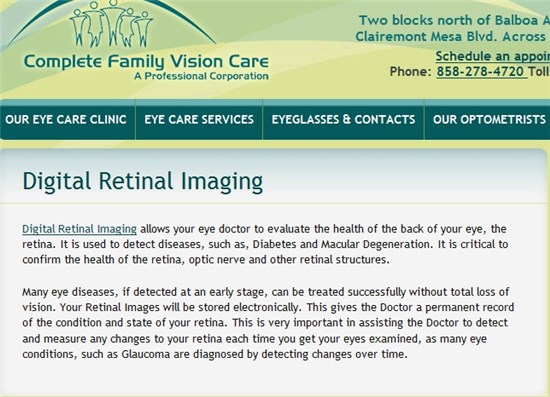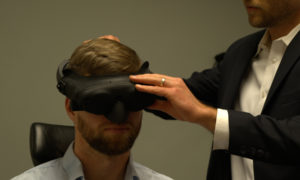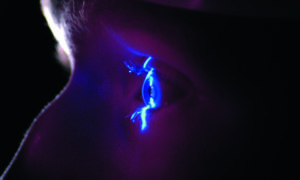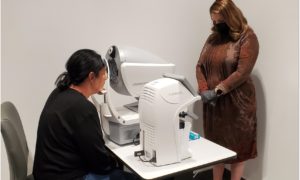By Eric M. White, OD
March 4, 2015
SYNOPSIS
Retinal imaging elevates your standard of care, but it requires a patient OK and out-of-pocket fee. When you effectively present the clinical benefits, 90 percent of patients accept the added fee.
ACTION POINTS
PRESENT AS PART OF PRE-TEST. Make retinal imaging a part of pre-testing and then have the doctor follow-up in the exam room.
EXPLAIN IMPORTANCE. Explain conditions it helps you to screen for and why it is worth the out-of-pocket expense.
TRAIN STAFF TO DISCUSS. Train staff on why it is important from a medical eyecare perspective, so talking about it becomes second nature.
Digital retinal imaging providesan in-depth, detailed look at the patient’s retina, allowing us to spotissues like retinal detachments, diabetic retinopathy and other sight-threatening conditions. However,each time we view the image, our practice incurs a cost from the manufacturer, which we pass along. To meet our requirements for medical insurancepanels, we need to ask the patient to agree to thisfee for a non-covered screening. Here is how my practice has achieved a 90 percent acceptance rate for images taken by our Optos retinal imaging instrument.
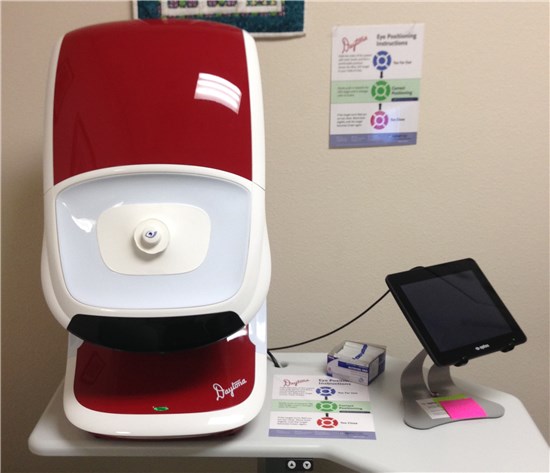
The Daytona Optos instrument in Dr. White’s office. Dr. White says the key to achieving a 90 percent patient acceptance rate is making the test a standard part of the pre-testing process, followed up in the exam room with education and patient approval for use of the images.
Present as Part of Pre-Test
We have such a high acceptance rate because we take the picture as part of the pre-test. Then, in the exam room, I explain the importance of the retinal scan and I prescribe it.
We used to forego taking the image during pre-testing, and instead, would wait until the doctor explained Optos in the exam room. If the patient agreed, they then would be sent back to the pre-testing area to get the Optos pictures taken.
This system was not time-efficient, and more importantly, patients would often balk at the idea of having to go back for another pre-test. Now we take an Optos image for all patients, and then get the patient’s agreement to its use and the payment of the fee in the exam room. It was when we started doing it this way that our Optos acceptance rate started to skyrocket.
Important to Explain Test Given Out-of-Pocket Expense
Educating patients about the importance of the test is especially important, given that it requires an out-of-pocket expense. It is the only test we do that is not covered by the overall exam fee. The other tests we do, such as the Clearpath diabetes screener and OCT, are included. The Optos test is $45 and $39 out of pocket for VSP patients. Since it is an additional charge, the patient needs to agree to it before opening the image. We can take the image, but we can’t open and review it without the patient’s consent.
The page on Dr. White’s practice web site detailing the digital retinal imaging that is part of the pre-testing process. Dr. White says it is important to fully explain the medical eyecare benefit of this test, as there is an out-of-pocket expense, and doing so shows patients the full value of the services you provide.
Emphasize Value of Your Services, Create “Wow” Factor
It is important the patient knows what tests are being done and why, so they understand the value of the service you are providing–and that you’re not just here to double-check their glasses or contact lens prescription. When patients understand that you are evaluating and monitoring their eye health with high-level technology, it adds a WOW factor of the exam. Patients realize just how many tests they are getting done and the significance of each test.
Train Staff to Discuss Optos and Other Pre-Tests
The staff–primarily our pre-testing technicians–mention Optos, explain what it is and why it important to monitoring the patient’s eye health. All pre-tests are explained while being preformed, but for Optos, due to the additional charge, the patient is told that the doctor will explain more in the exam room.
When our staff is trained on the test, I show them not only how to work the instrument, but why the instrument is significant. When the pre-tester fully understands and appreciates the significance of the tests they perform, it becomes second nature for them to talk about it to patients.
Explaining the tests you are performing, including
high-level testing like Optos, that come with an out-of-pocket expense, need not add significant time to pre-testing.Our pretest is designed for 20-30 minutes total. The prescribing of Optos, in which the pre-tester explains what is being done, literally only takes 30 seconds. For that small amount of time and effort, you get a patient who fully understands the service you are providing–and doesn’t mind paying a little extra for it.
Eric M. White, OD, is the owner of Complete Family Vision Care in San Diego, Calif. To contact him: Emwhiteod@aol.com.

